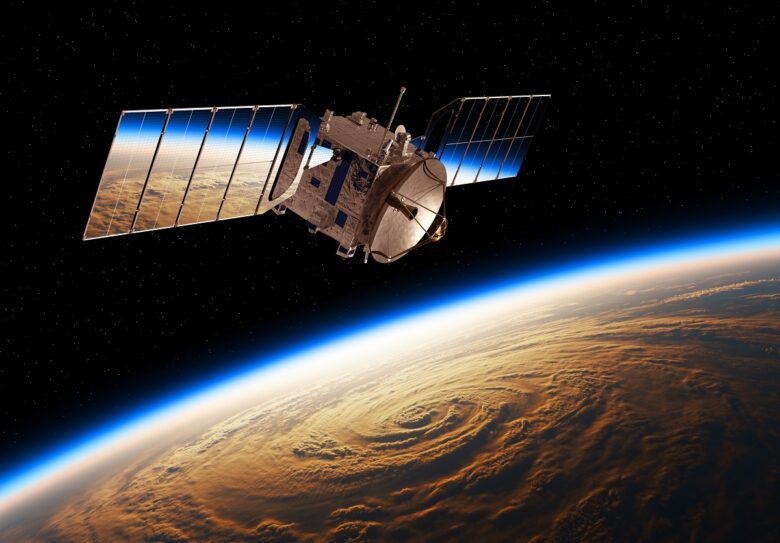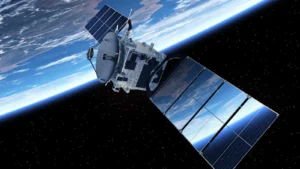Space technology has made tremendous advances in recent years, pushing the boundaries of what humans can do beyond Earth. These new ideas not only help us learn more about the universe but also open the door to new businesses and opportunities. New developments in space technology are changing the way we explore and use space. This includes rockets that can be used multiple times and more advanced satellites. We also plan big trips to explore the farthest reaches of the solar system. This article discusses the most important new developments in space technology and what they mean for the future.
1. Reusable Rockets
Creating rockets that can be used multiple times is one of the most important developments in space science. In the past, rockets were single-use vans; each launch required a brand-new rocket. This makes access to space very expensive and resource-intensive. But companies like SpaceX have changed the industry by building rockets that can be launched, returned, and used again and again. For example, the Falcon 9 makes space flight cheaper by recycling and reusing the first stage. Reusable rockets not only make traveling in space cheaper but also ensure that flights take place more often. This makes it easier for companies to go into space, for scientists to conduct research, and for people from different countries to work together. Being able to use a rocket multiple times is an important part of long-term space travel, as it makes the process more cost-effective and better for the environment.
2. Satellite Improvements
Satellites are very important to modern life because they aid in navigation, communications, weather forecasting, and scientific research. New developments in satellite technology make them more useful and improve their skills. Small satellites, known as CubeSats, are becoming cheaper to build and launch as the satellite components become smaller. These small satellites can be grouped into large groups, providing broad coverage and enabling the delivery of advanced services such as connecting to the Internet around the world. A famous example is SpaceX’s Starlink project, which aims to build a vast network of small satellites to quickly connect everyone in the world to the internet. This massive project has the potential to bridge the digital divide by connecting remote and underserved areas to the Internet.
3. Space Tourism
Space tourism was once just an idea in people’s minds, but it is quickly becoming a reality. Private companies such as Blue Origin and Virgin Galactic build commercial spacecraft to transport tourists on suborbital flights. These flights allow tourists to feel weightlessness for a few minutes and enjoy beautiful views of the Earth from space. Thanks to these trips, space is now accessible to people other than astronauts and scientists. This is the beginning of a new era of space travel. Space tourism could develop into a major industry that encourages new ideas and investments in space technology. It also serves as an inspiration to get people excited and interested in space travel. Space tourism could help improve space technology and use the money it generates to pay for bigger trips.
4. Deep Space Travel
Deep space exploration remains one of the most difficult and interesting areas of space technology. International space agencies, private companies, and NASA are all developing ambitious plans to study distant planets, moons, and asteroids. The Artemis mission, for example, hopes to return humans to the moon and establish a permanent base there by 2024. The trip is seen as a stepping stone to future missions to Mars and elsewhere. Access to deep space requires technological advancements. The invention of ion propulsion and nuclear thermal propulsion could make reaching distant places faster. These more advanced propulsion systems are more efficient and faster than standard chemical rockets.
5. Space Mining and Resource Utilization
Space mining and resource utilization is a new area of space technology that can help make space travel more sustainable and benefit people on Earth. That’s the idea of harvesting useful things like water, minerals, and metals from asteroids, the moon, or other celestial bodies. These resources can support space missions, reduce the need for expensive supplies from Earth, and even open up new business opportunities. One of the most important things for space travel is water, which can be used to drink, grow food, and create oxygen. It can also be broken down into rocket fuel, hydrogen, and oxygen. Extracting water from the moon or asteroids could help build camps and refueling stations on the moon, making deep space exploration easier.
6. Living in and Colonizing Space
The idea of living in space and colonizing other planets is no longer just a dream. As space technology advances, the idea of living and working in space becomes more and more possible. As a place to study long-term human life in space, the International Space Station (ISS) has always been very important. The International Space Station is helping shape the design of future space habitats that can house more people and enable longer journeys.
Space habitats could also be built on the moon to serve as a base for scientific research, resource collection, and possible future missions to Mars and other planets. Creating habitats with inflatable and 3D printed structures using materials found on the moon or Mars are both exciting ways to create sustainable living spaces in space.
Conclusion
Recent advances in space technology have made it easier to explore, make money, and live beyond Earth. We are changing the way we explore space and learn more about the universe through reusable rockets, advanced satellites, space tourism, deep space exploration, space mining, and space habitats. As these tools continue to improve, they will not only help us live in space, but they will also improve life on Earth. There is a lot of promise for the future of space technology, and the progress we make today will shape the next big things humans can do.
FAQs
1. What changes has the advancement of satellite technology brought to society?
The manufacture of smaller components and small satellites (CubeSats) are examples of technological advances that make satellites more useful. They help people around the world connect to the internet, care for the environment, respond to disasters, and manage resources. SpaceX’s Starlink and other similar projects hope to bridge the digital divide by connecting everyone to the internet at high speeds.
2. What are the pros and cons of space tourism?
Companies like Blue Origin and Virgin Galactic build spacecraft for suborbital travel, meaning people can visit space. Space tourism could develop into a major industry that encourages new ideas and investments in space technology. It also gets people interested in space travel and provides money to pay for more progress.
3. What major recent progress has been made in deep space exploration?
NASA’s Artemis program is the latest major step forward in space travel. The goal is to return humans to the moon and make it a permanent home by 2024. The Perseverance rover mission will search for signs of past life on Mars, and the Europa Clipper mission will soon observe Jupiter’s moon Europa to detect signs of life on Mars. See if it can sustain life.
4. How can space mining help Earth and space exploration?
Space mining is the process of obtaining useful materials from space objects such as asteroids and the moon. Demand for terrestrial resources could be reduced by water extraction in space, which could sustain life and be used to make rocket fuel. Extracting valuable metals and minerals from asteroids could create new jobs and reduce the damage mining causes to Earth’s environment.
5. What will happen to space colonies and space homes in the future?
Creating sustainable places to live and work in space is important for the future of space settlement and colonization. Major advances are needed in radiation shielding, life support equipment, and sustainable agriculture. The International Space Station (ISS) is an example of a place where people can stay for long periods. Meanwhile, companies like SpaceX are building spacecraft that can send people to Mars and beyond.



